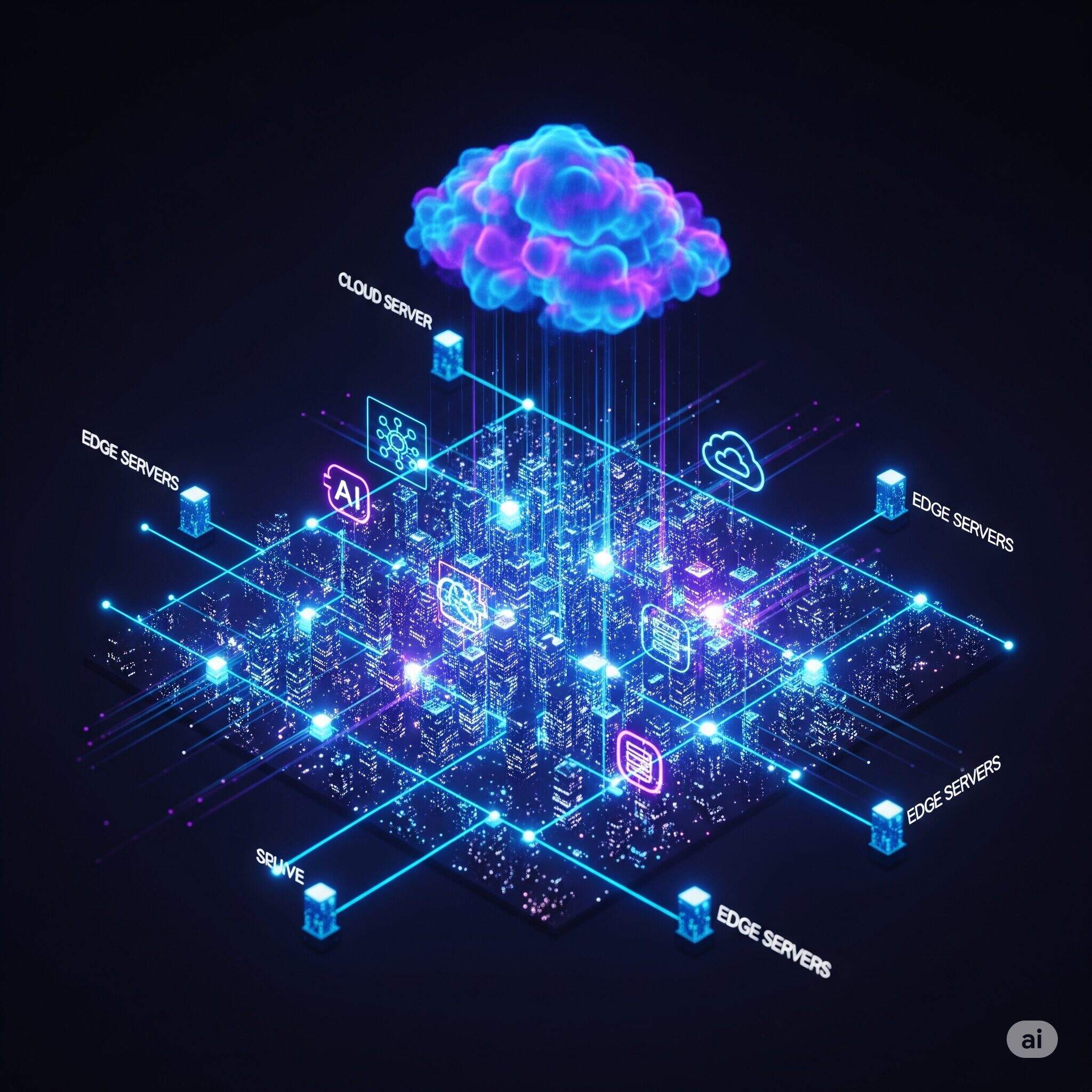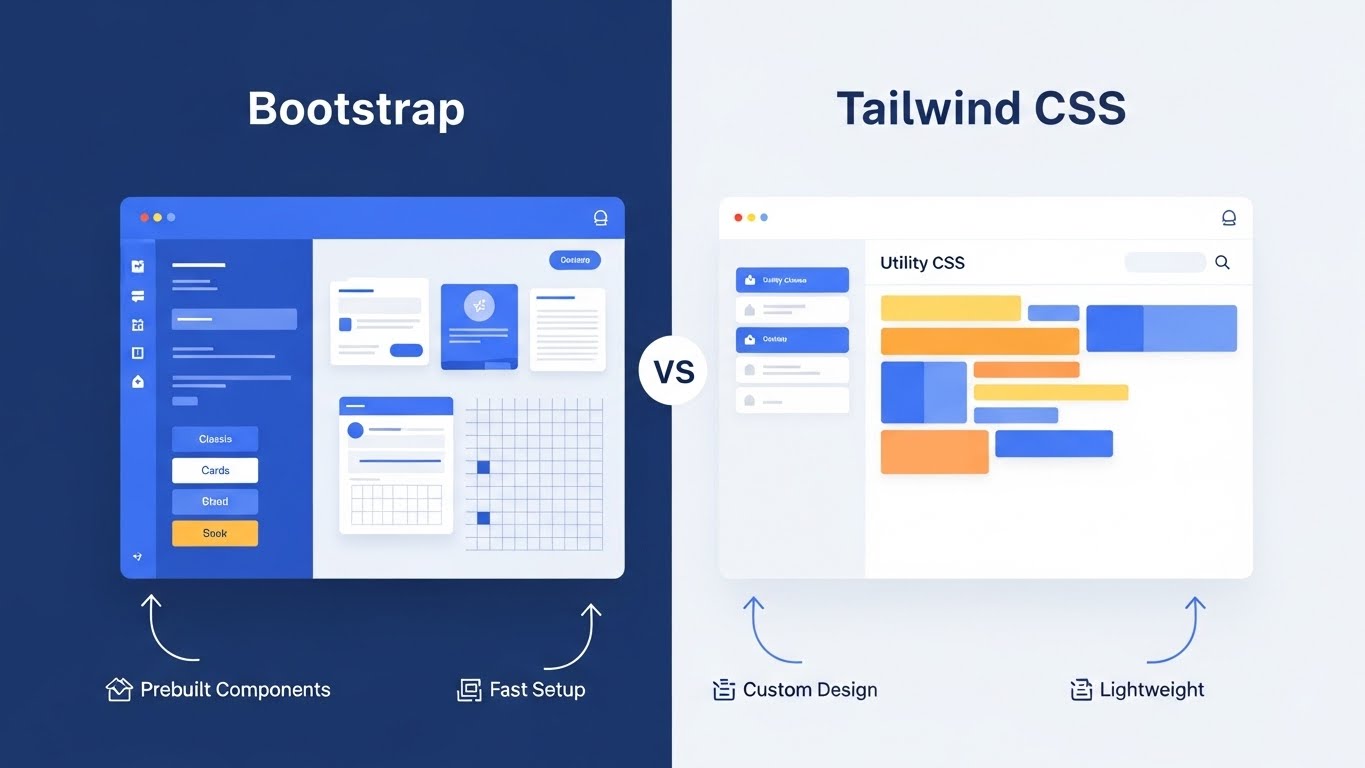Why Every Developer Should Care About Edge Computing in 2025

📅August 19, 2025
Beyond the Cloud:
So here’s the thing: for years, devs just threw everything at the cloud and called it a day. Need more horsepower? Spin up another cloud instance. Want fast content everywhere? CDN to the rescue. It’s been the go-to answer for basically every scaling headache.
But now? The cracks are showing. Apps keep getting chunkier, people have the patience of a goldfish, and data’s blowing up like it’s on a mission. Users want answers, like, yesterday. AI-driven stuff? Forget it—waiting on the network is a dealbreaker. And with IoT gadgets puking out data 24/7, funneling everything back to some giant cloud mothership is just…dumb.
Enter edge computing. In 2025, nobody’s calling it a fad anymore. It’s a must-know, must-use deal. If you’re still building apps like it’s 2015—centralized, everything in one place—you’re basically bringing a spoon to a gunfight.
What Is Edge Computing (In Developer Terms)?
Cut through the hype: edge computing is just running your code and processing closer to your users or their devices. Not in some far-off hyperscale data center.
- Cloud-only play: Request → Data center somewhere in the void → Response (eventually)
- Edge play: Request → Closest edge node (down the street, maybe) → Response (blink and you miss it)
That tiny shift? It’s a game changer—suddenly, lag drops, you use way less bandwidth, your stuff breaks less, and privacy’s not an afterthought.
For devs, it means new patterns: no more “one-region-to-rule-them-all.” You start building with the idea that logic, APIs, even AI inference, can and probably should—run all over the place.
Why Developers Can’t Ignore Edge Computing in 2025
\
Speed Is Everything
Look, slow apps are dead apps. No one waits around for a spinning wheel. A 100ms delay? In ecomm, gaming, finance—that’s enough to lose people. For good.
Running logic or APIs on the edge means:
- Lightning-fast responses (users barely notice the wait)
- No more bouncing requests halfway across the planet
- Even folks with sketchy connections get a smooth ride
With AI chatbots, multiplayer games, AR—if you’re not obsessed with shaving off milliseconds, you’re missing the point.
- AI on the Edge, Baby
2025’s wild. AI models aren’t locked up in the cloud anymore. Now:
- Phones, browsers, IoT stuff—they’re all running lightweight models on-device
- Edge nodes tackle real-time translation, image/fraud detection, you name it
- Personalized AI (think: assistants that “get” you) runs locally, so your data isn’t flying off to some mystery server
Frameworks? TensorFlow Lite, ONNX Runtime, PyTorch Mobile—pick your poison. If you’re a web dev, Vercel Edge Functions and Cloudflare Workers AI are stupidly easy ways to do ML at the edge. No GPU wrangling required.
- Costs: Cloud Bills Are a Nightmare
Honestly, cloud pricing feels like a horror movie. Ship every byte to AWS/GCP and watch the bill eat your runway.
Edge helps because:
- Data gets processed where it happens—no more dumping raw logs in the cloud
- Compute is spread out—no need for constant, pricey servers
- You pay for what you use, not for keeping stuff running 24/7
Not just theory: companies pushing analytics to the edge are saving up to 40%. That’s not chump change.
- Security & Privacy: Not Just Buzzwords
If you’re handling sensitive stuff—health, finance, whatever—cloud centralization is a compliance headache and a juicy target for hackers.
Edge gives you options:
- Data hangs out near where it’s created (not in some data center black hole)
- Fewer big, fat targets for attackers
- Easier to stay on the right side of laws like GDPR or HIPAA—keep data local, avoid unnecessary transfers
Edge Tools for 2025
The best part? You don’t need to build your own global network (unless you’re a total masochist). The big players have made it dead simple:
- Cloudflare Workers / D1 / R2 — JS/TS functions in 300+ cities.
- Vercel Edge Functions — Next.js devs, this is your jam (API routes, edge middleware).
- AWS Lambda@Edge — Plug functions right into CloudFront.
- Deno Deploy — TypeScript at the edge, super slick.
- Fly.io — Deploy whole apps anywhere with barely any fuss.
If you’re a web dev already using Next.js or React, Vercel + Cloudflare are the easiest entry points.
How to Think Like an Edge-First Dev
Edge isn’t “just another host.” It’s a shift in how you build. Here’s how to get your head in the game:
- Stateless APIs — No hanging onto sessions forever; JWTs, KV stores, whatever works
- Keep It Light — Big dependencies are a buzzkill; edge likes small, nimble code
- Event-Driven — Edge is all about quick, triggered functions (auth, cache, data tweaks)
- Offline-First — Design like the cloud might vanish at any moment
- AI Split — Do inference at the edge; keep the heavy model training in the cloud
Real-World Edge Computing in 2025: Stuff’s Getting Real
1. Retail & E-Commerce: Fast, Freaky Personalization
Walk into a store in 2025 and you’re already living in an edge-powered world.
Edge servers in-store track what you scan, browse, or even linger over.
Instant recommendations pop up—think “Hey, you want socks with that?”—because everything’s processed on the spot.
For devs:
Build lightweight, edge-ready AI that doesn’t need a monster server.
Speed is king—shoppers won’t wait.
2. Gaming & AR/VR: Lag Is Dead, Long Live Fun
Gamers hate lag. No shocker there.
Multiplayer games run on edge servers closer to you, not halfway across the world.
AR/VR devices offload graphics and motion crunching to local edge nodes—so no more choppy zombies.
For devs:
Squeeze every millisecond out of APIs and rendering.
Make sure games don’t melt down if the edge node bails.
3. Finance & Payments: Security, But Make It Fast
Every millisecond is a mini-fortune (or a disaster) in finance.
Banks now run fraud detection at ATMs and payment gateways, not just in the cloud.
Suspicious stuff gets blocked instantly—no waiting for central approval.
For devs:
ML at the edge is your new best friend.
Security and compliance need to be baked in, not bolted on.
4. Healthcare: Privacy, But Don’t Make Me Wait
Wearables and monitors analyze your data locally—so you get alerts in real time.
Sensitive info stays put; anonymized stuff goes to the cloud for analysis.
For devs:
Deal with HIPAA, privacy, and secure data pipes.
Build ML models that aren’t blabbermouths with patient info.
Cloud vs. Edge: It’s Not a Battle, It’s a Tag Team
- Cloud’s still the muscle for big data, global stuff, and training huge AI models.
- Edge is all about instant action—fraud checks, AR graphics, medical alerts.
- The winners in 2025 are hybrid:
- Smartly juggling what runs on edge vs. cloud.
- Saving money, boosting performance, and keeping users happy.
Devs, Listen Up: The Real Takeaway
Edge isn’t optional anymore—it’s the new baseline.
You want:
- Faster apps → happier users.
- Smarter AI → real-time, privacy-friendly magic.
- Lower bills → you keep your job (and sanity).
- Better security → regulators chill.
Stop asking if you should care about edge. Start asking how fast you can get your stack ready. Apps actually winning in 2025? They’re edge-first. Don’t sleep on it.

